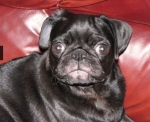Post
by JDS74 » Tue Jul 24, 2018 1:09 pm
An issue that I see here in this narrative is one of precisely how to use an auto-adjusting CPAP machine for optimum therapeutic treatment.
Many (some of them doctors) have the idea the setting a wide open range of say 4-14 cmH2O will allow the machine to provide the optimum pressures.
If what your really need is closer to something like 13 cmH2O, then the machine will be chasing (relatively slowly) the optimum pressure all night and you will not get the rest you need.
Auto-adjusting CPAP machines can supply lots of data on pressures used, etc. In particular, they can provide the 90% number.
In our example case of 4-14 cmH2O, the 90% number might be 10 cmH2O (I'm making these number up folks just for an example.)
Then you could take that number and see that the lower limit of 4 cmH2O was way too low so that an increase was warranted,
OTOH, suppose the 90% number was 13.5 cmH2O, that would mean your system should be looking at raising the 14 number just a little.
So, for the next week (remember, always use a week's worth of data because we all vary a lot night-to-night) the range might be changed to, say, 8-14 cmH2O if the 90% number was 11 or 10-15 cmH2O if the 90% number was 13.5 (remember - just made up numbers for illustration - your mileage will vary.)
Changes like these get the machine closer in its initial settings to what you really need and so the changes it make in auto mode get closer to what you need faster.
In some sense the original doctor was right that the auto machines don't get the job done fast enough but wrong in assuming only fixed pressure machines can do the job. Bi-level machine solve a real problem - patients sometimes struggle to be comfortable on exhale and b-level (or pressure relief) machine help that which in turn helps compliance. Auto-adjusting machine solve a different but just as real problem - sometimes patient's pressure needs during the night vary significantly - lower pressure sometimes and much higher at other times. And that's just for patients whose "only" problem is obstructive sleep apnea. For those like me, my machine has a ventilator mode for when I just stop breathing. That's called a central apnea and the airway is open nicely and I could breath but just don't. Without a specialized bi-level machine, nothing would happen and I would just lie there not breathing. My normal occurence of one of these is about 6 minutes (the longest one was 2.5 hours) - enough to get into trouble and wake up in a panic struggling to breathe.
So, get a copy of SleepyHead or the manufacturer's own reporting program and see for yourself what is going on. It's likely that the settings of 4-15 cmH2O are just too wide to provide you with what you need.
Oracle 452 Lessons Learned Updated
DSX900 AutoSV with HC150 extra humidifier and Hibernite heated hose
Settings: EPAP Min-10.0, EPAP Max-17, PS Min-3, PS Max-10, Max Pressure-20, Rate-Auto, Biflex-1.
Sleepyhead and Encore Pro 2.21.










